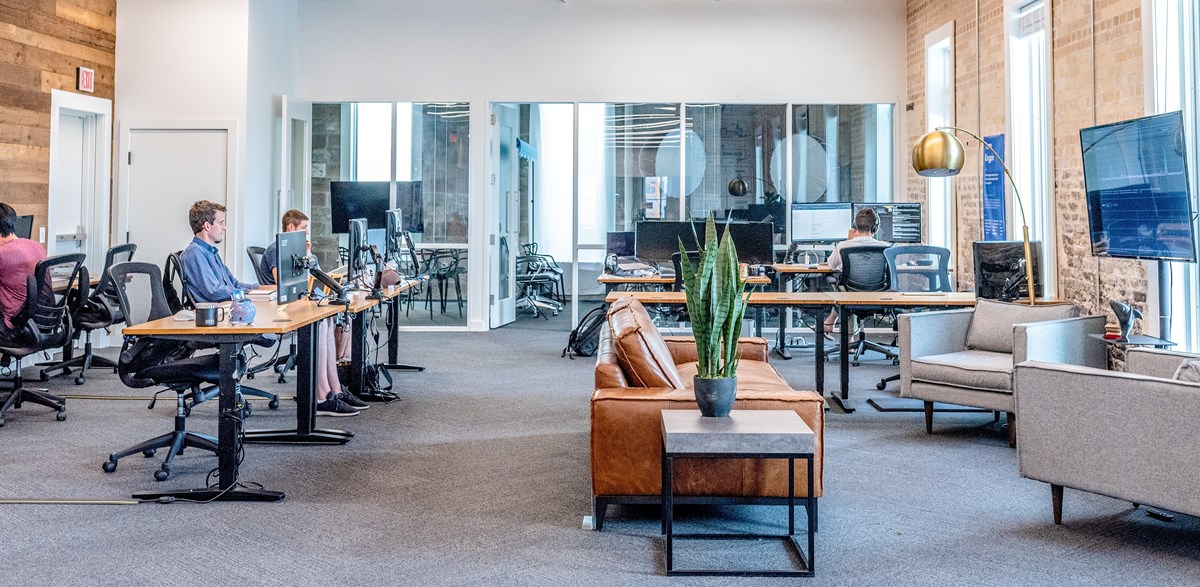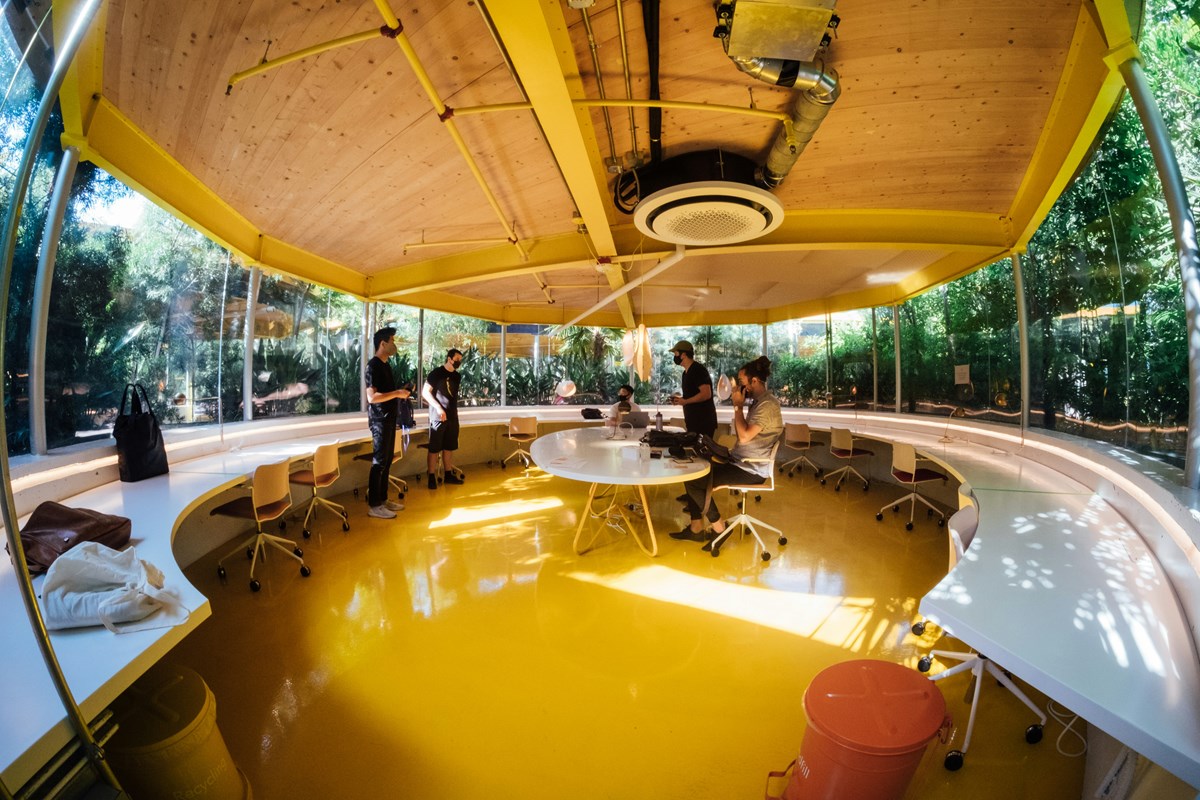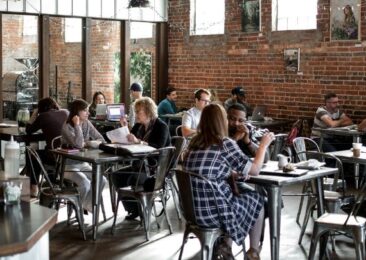- Coworking
Trad Offices Are Out. Coworking’s In
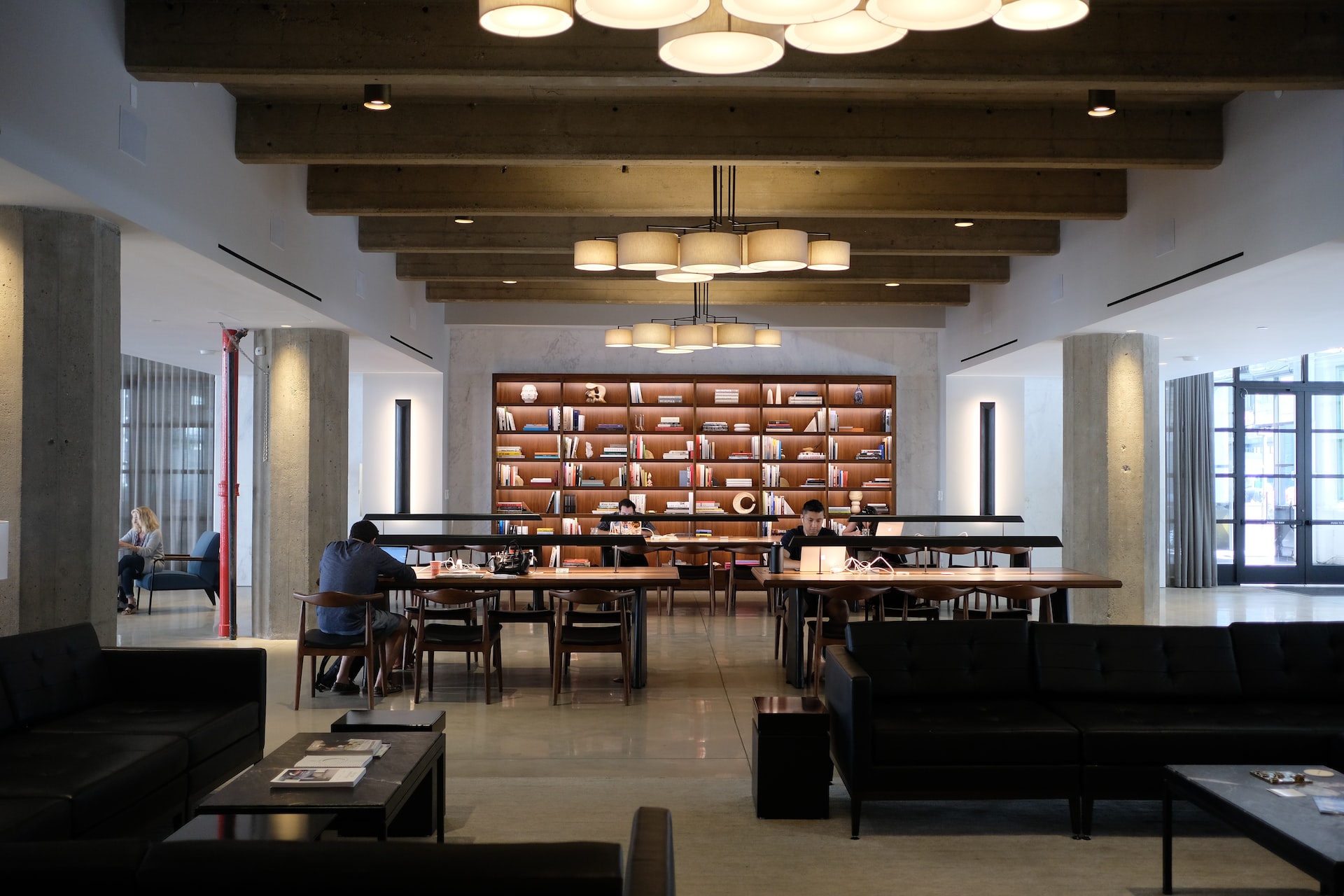
In the world of workspace, coworking is becoming the default. Compared to a traditional office setup, coworking is winning.
Its growth is nothing short of astronomical. Okay, this might sound a bit over the top, but the expert’s projections back it up. Take Grand View Research’s analysis, for instance.
They reveal that, in 2023, the global coworking market was worth an estimated USD 14.91 billion. And it’s projected to soar to USD 40.47 billion by 2030, growing at a CAGR of 15.7% from 2024 to 2030.
For context, most industries grow at a rate of 3–7% CAGR. Anything above 10% is considered fast growing, so 15.7% is indicative of skyrocketing customer adoption and quick scaling.
Coworking. Is. Everywhere. Sure, North America has the biggest market share, but there are coworking epicentres in other parts of the world too (London being a prime example).
Asia Pacific is the fastest growing market, driven by its rising digital entrepreneurship, tech startup culture and infrastructure development.
And on an individual level, nearly 60% of companies (who are looking to expand their offices) surveyed by WeWork are opting for flexibility over traditional.
From movement to mainstream
Coworking is nothing new.
Humans have always had an innate need for community and connection.
The origins of coworking as we know it today date back to the mid nineties, when hackerspaces like C-base in Berlin were born. These are spaces that to this day facilitate collaboration between tech workers and enthusiasts, such as video game developers.
Before, coworking was more of a philosophical concept than a physical space.
Then, in 2005, Brad Neuberg opened the first official coworking space in San Francisco, and many, many more followed suit. Today, there are an estimated 40,000+ coworking spaces across the globe. And counting.
Yes, the concept has scaled. Drastically. And community is still a core value, and perhapsat a time when many communities are dividing or eroding—that’s why coworking continues to gain in popularity.
There are many coworking leaders and initiatives out there working to keep ‘community’ at the forefront of the movement.
Take The Coworking IDEA Project, for instance. It’s an international collective that works to make coworking spaces more Inclusive, Diverse, Equitable, and Accessible by providing operators with monthly challenges, from supporting parents to ensuring fair pay.
Ashley Proctor is the founder of Creative Blueprint and Coworking Canada, and one of the founders of the coworking IDEA project. She spoke with the European Coworking Assembly, a non-profit organisation that supports and promotes the coworking movement, about the motivation behind IDEA.
She noticed that many coworking spaces had been “drifting towards more of a financial and a corporate sort of construct around coworking in the industry.”
If you’re interested in learning more about how to centre community and inclusivity in your own coworking space, check out the Coworking Values podcast.
Hosted by Bernie J Mitchell and Jose Antonio Morales, it explores themes of accessibility, community, openness, collaboration, and sustainability, through discussion and interviews with industry and industry-adjacent leaders.

Ashley Proctor
Founder, Creative Blueprint and Coworking Canada
The decline of the office
Rather than eclipsing the traditional office, you could say that coworking is evolving it—
and coexisting with it as a hybrid work model.
Increasingly, ‘desk-based’ businesses are using coworking to facilitate their hybrid work arrangements, with teams and individuals splitting their time between the office and home (or indeed third spaces, such as cafes and libraries).
At the same time, traditional offices are pivoting to coworking or adapting to become more flexible, with a sharper focus on collaboration and occupier experience. Many traditional office landlords are adding coworking to meet the demands of today’s tenants.
By 2030, JLL predicts that 30% of office space will be flexible.
Research by office listings site Rubberdesk shows that traditional landlords are actively transforming their portfolios, converting their conventional 5-10 year leases into flexible managed solutions (versions of coworking or serviced offices for larger businesses). As such, they’re prioritising modern fit-outs, excellent amenities, and all-inclusive billing.
Unsurprisingly, London is a key traditional-flexible conversion hub: 40% of new flexible inventory in 2024 on Rubberdesk came from converted traditional space.
Unlike inflexible office leases, flexible workspace solutions like coworking are designed to accommodate hybrid teams, through technology integration, adaptable layouts, on-demand access and flexible agreements (such as one to six month notice periods, allowing businesses to upscale, downsize or exit at short notice).
And hybrid working is here to stay.
Nick Bloom is a Stanford Economist who has been studying remote work for over twenty years. He is the co-founder of WFH Research, a platform that provides insights and best practices on working from home. He joined Frank Cottle from AllWork on a podcast to talk about remote work in 2030—you can listen to it in full or grab the highlights from AllWork.
"What it does for you is it dramatically reduces turnover and makes it easier to recruit and retain. So if I look at Stanford, we have thousands of people on hybrid and remote. Why? Because it keeps down our wage burden and stops turnover."
Nick Bloom
Professor of Economics, Stanford and remote work expert
Coworking is more scalable than trad office
Flexible workspace is easier to scale. JLL reports that 42% of firms are accelerating investment in flexible office spaces in order to align with their changing office needs. After all, it’s easier to scale up or downsize in a coworking space—a leased office, not so much.
Scalability is all about removing roadblocks to growth. A leased office is a fixed asset that locks the occupier into a contract and structure, while coworking is a flexible service that enables members to occupy space in a more fluid way.
It’s built on the principle of flexibility and shared resources, and it’s driven by demand.
Traditional offices that rely on leases require significant upfront expenditure, and this makes it difficult for companies to expand and contract quickly. It also puts pressure on them to think ahead and make projections—which can be difficult in such an unstable economic climate.
In other words, traditional offices require financial commitment: if the company grows, it’ll foot the bill for relocation; if it contracts, it’ll end up paying for unused space.
Conversely, coworking spaces are adaptable and can align with the company’s changing desk count (the benefits of renting on a per-desk as opposed to square foot basis).
Coworking’s scalability appeals to SMEs and big organisations alike because it reduces both sunk costs and logistical headaches. A company might add three desks one month and ten a few months later, without having to negotiate a new lease.
Depending on availability, they may be able to stay within the same building, or move to another on the coworking operator’s portfolio.
Larger organisations sometimes choose to rent flexible workspace through global operators, making scaling even easier. Depending on membership type, office renters may gain access to the other locations on the operator’s portfolio, allowing them to scale geographically and test new markets without having to commit to a long-term lease.
Member-led demand is reshaping supply
Research by Harvard Business Review found that people who belong to coworking spaces report levels of thriving that approach an average of 6 on a 7-point scale — a point higher than the average for employees who do their jobs in traditional offices.
From scalability to satisfaction, coworking seems to be winning. Every time.
Member-led demand is influencing workspace usage patterns in a way that traditional offices just can’t keep up with. When it comes to traditional offices, supply is typically led by landlords and long-term cycles. An office is set up, and subsequently leased and run based on projections, as opposed to current user needs—and this can create a gap between demand and supply.
Coworking is the opposite in that supply is led by end-users, ie. members (the individuals and organisations who require flexibility, community and amenities). Operators curate space and experiences based on evolving needs, in near real-time, by adding desks, reconfiguring layouts and upgrading infrastructure. Instead of landlords calling the shots, members’ usage patterns influence how flexible workspaces evolve.
A coworking space might look at its resource usage and see that meeting rooms are always booked up and waiting lists are filling, however some hotdesking areas are sitting empty. They can respond to this demand by reconfiguring hot desking areas into meeting room pods. The space grows organically and dynamically with its members, who don’t have to evolve around their office space.
In essence, traditional offices are supply-led, with companies having to conform to the available space, whether it fits their needs or not. Coworking is demand-led, so spaces are always changing and adapting in response to the real-time needs of members.
Where operators and landlords meet
Coworking isn’t just a tenant amenity: it’s core product.
To stay competitive, traditional office landlords are increasingly white-labelling coworking and adopting it as part of their property portfolio—instead of leasing to other coworking brands. Cushman & Wakefield did this in 2020 with INDEGO, a service for landlords to create bespoke flexible workspaces under management contracts.
The press release reads:
‘Launched to meet the demand from office owners for a flexible workspace solution without operational complexities, INDEGO is a customisable service that encompasses design & build, marketing, sales and on-site operations offered under a management agreement with Cushman & Wakefield.’
JLL also offers white-label coworking. In 2025, Canberra Airport appointed JLL to design, lease, and manage Collab Brindabella, a new coworking offering within Brindabella Business Park at the airport. What’s more, JLL UK has a “Flex by JLL” arm, which delivers flexible workspace, amenity offerings and event/meeting spaces.
White-labelling enables landlords to transform underutilised space into profitable, ready-to-go workspace, while retaining ownership. It also provides huge added value to tenants, such as larger enterprise tenants who require ad hoc access to flexible workspace.
Of course, technology is the glue that connects members, space, and community. Like coworking operators, landlords partner with software companies to run bookings, memberships and community engagement, to create a seamless member experience.
Ultimately, white-labelling lets landlords diversify and monetise vacant space while meeting the rising demand for flexibility—without outsourcing to operators. It positions landlords as service providers too, and it’s reshaping their role in the office ecosystem.
The operator’s moment
Coworking operators aren’t like traditional office landlords.
The majority of operators don’t own the buildings they run.
As an operator, you might lease your locations from a landlord and rent to members, or run locations on behalf of the owner as part of a management agreement (where you provide the expertise, brand, and daily operations, and the owner covers capital expenditures and shares profit). Or, of course, you might indeed be an operator-landlord.
Coworking operators are often seen as curators of culture. While the role of Community Manager is crucial when it comes to delivering on promises.
They embody the value of community, and it informs everything they do—from running community events, to brokering introductions within the space, responding to member feedback, to helping ensure the building and its amenities are accessible for all.
Here are a handful of coworking mission statements to prove it.
“We started out as a bunch of friends who wanted to work in a more productive environment instead of our living rooms. We wanted to build a place and community where every person could feel more fulfilled after a day of work.” – Humgy Cowork Space, Belgium
“Teamwork is the key component in our success and our values; our goals and objectives all stem from this. Colony is a community, where every voice matters and everyone is welcome.” – Colony, UK
“We envision a working world in which suburban individuals, teams, and companies reclaim their ideal life-work balance for a more fulfilling life collage.” – 25N Coworking, US
“Unlike many other workspaces, we’re not backed by venture capital or spread across multiple locations. We’re rooted in the creative spirit of E17, relying on our long-standing community relationships to keep us thriving.” – Creative Works, UK
What’s next
Coworking is so closely tied to community, and communities evolve to adapt to the changing times and the people they serve. Here’s where we think coworking is currently heading, and how the Nexudus platform is either enabling or accelerating its trajectory.
Here are three major flex workspace trends.
-
- Hyper-personalised experiences
Coworking has been referred to as ‘space-as-a-service’ for over a decade now, but many spaces have evolved to deliver ‘experience-as-a-service’. So, perhaps it’s time to revamp the lexicon! Members have come to expect curated experience, whether it’s a customised work station or a wellness program geared to their needs.Nexudus’ automation tools and CRM capabilities allow operators to track member preferences, behaviors, and usage, making personalisation much easier. For example, Nexudus users can tailor plans to individual or company needs, and automate welcome sequences, workspace guides, and event invites. This creates loyalty and reduces churn. - Borderless networks
The future of work is dispersed and hybrid. And that means distributed workspace access. Tomorrow’s members—like many of today’s—want to move easily across cities and international borders, while remaining part of one overarching coworking community.Nexudus supports multi-location management and integrated billing, empowering operators to scale globally while offering members a consistent, frictionless and ‘borderless’ coworking experience. - Data-driven optimisation
Yes, data is already huge – but it’s only getting bigger.Operators will increasingly use real-time data to shape how their spaces evolve (in line with demand). Decisions will be informed by analytics on occupancy, booking frequency, and member engagement.Nexudus’ reporting and IoT integrations allow operators to see exactly how their coworking space is used, predict future short-term demand and adjust layouts accordingly. It’s about maximising revenue per square foot while improving the member experience.
- Hyper-personalised experiences
Join the movement
Traditional office alternatives, like coworking, are fast becoming the norm.
So, it’s never been more important to lean into technology and community. After all, fixed leases are no match for human connection.
Industry leaders will use technology in a strategic way to inform real-time physical workspace supply, while curating authentic experiences that attract and retain members.
Winning doesn’t just hinge on providing ample desk space and facilities—it’s about positioning coworking as the future of how people connect and grow at work.
Want to know more about
how Nexudus could help your business?
We’re here to answer any questions you have.
Latest articles
-

- Community
- Coworking
- Coworking Resources
- Uncategorized
The Hidden Utilisation Problem Affecting Most Coworking Spaces – And How to Fix It
Emily Nguyen on December 3, 2025 -
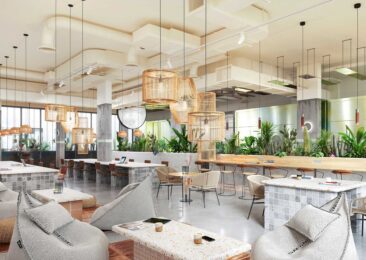
- Coworking
- Coworking News
Lucy’s Top 10 Coworking Spaces in 2025 in and around London
Lucy McInally on December 2, 2025

